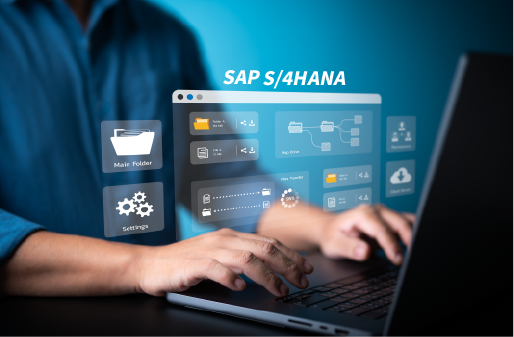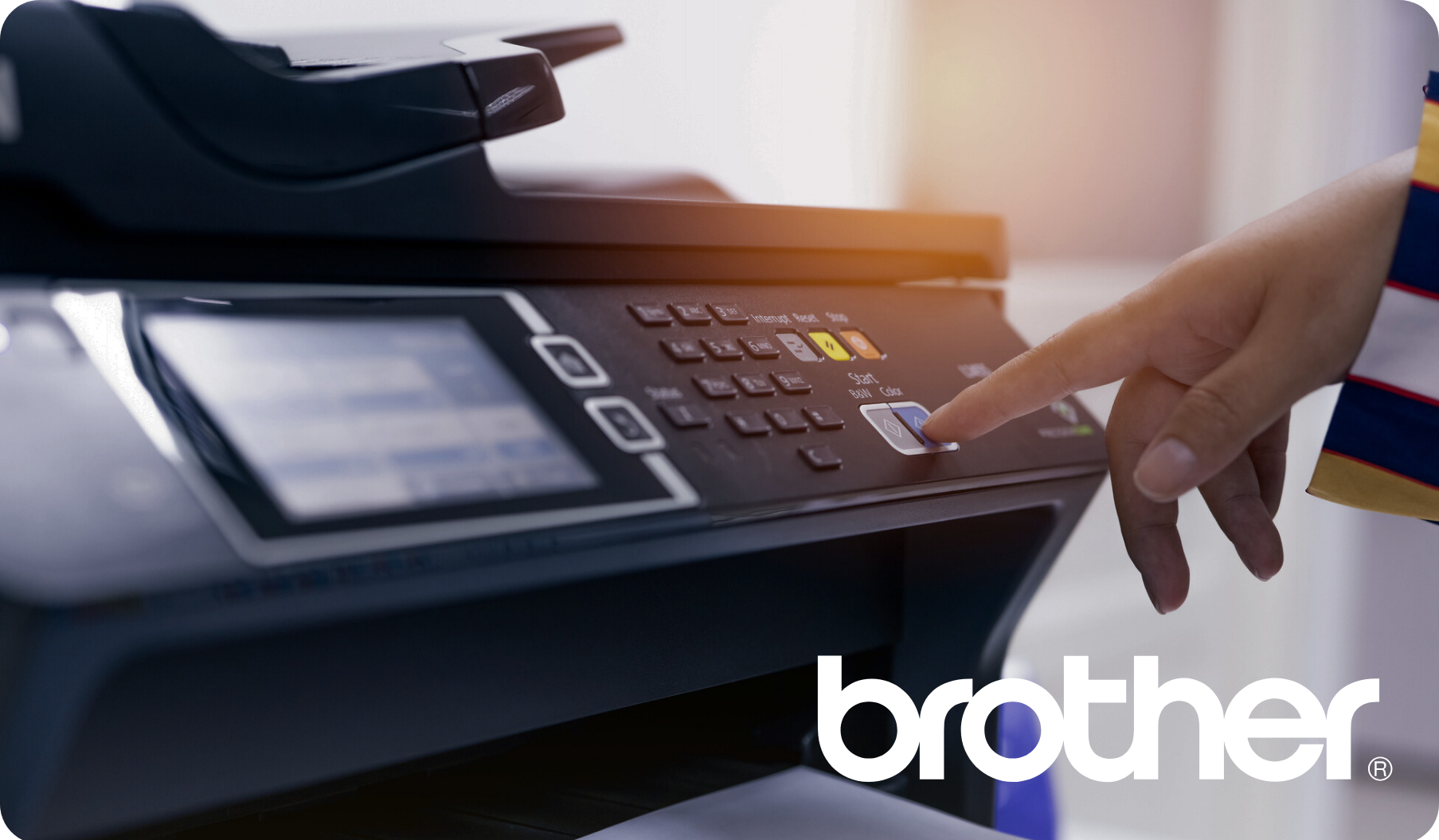Keys to a Successful SAP S/4HANA Migration: SAP Migration Guide

You're most likely aware that by 2027, support for traditional ERP applications on the SAP NetWeaver platform will cease to exist. Forcing organizations to make a move – either to SAP HANA or its successor, SAP S/4HANA.
But beyond the deadline, there's a strategic opportunity not only to ensure a seamless migration process, but also to maximize the benefits of the new cutting-edge ERP solution. To achieve this, careful planning and strategic considerations are paramount.
As we've assisted countless migrations to SAP S/4HANA, we outline 10 essential steps and considerations to streamline your migration process, unlock the full potential of SAP S/4HANA, and minimize the most common delays and obstacles.
1. Determine What a Finished Migration Looks Like to Your Company
It can be helpful to outline the project's goals before the migration starts so you have an end goal to work towards. Begin with the end in mind, as the saying goes.
So what are you looking to accomplish with your new ERP architecture? Do you want to set up faster reporting that aggregates data from various platforms? Do you have a list of certain business processes you want automated? Are your critical integrations set up?
2. Identify Which Areas Need Optimizing and Which Are Fine as Is
One of the many benefits of migration to S/4HANA is customizing it to the unique needs of your business. However, it is not about change for change's sake, but rather orchestrating an upgrade that adds value. Sift through your digital ecosystem and manual processes to identify which aspects can be improved and optimized with the new technology, and which are better off left untouched.
For example, S/4HANA can create advanced graph databases. These are particularly helpful when analyzing interwoven data since they visually depict the relationship between data points. Another example is if a manufacturer is already using an EDI integration provider to automate their order-to-cash process. In this case, it may be better to leave this process as is. This is because EDI is usually not an ERP’s strong suit, even though it may be a provided functionality as seen with SAP EDI.

Brother trusted Cleo to manage their EDI while upgrading to SAP S/4HANA
Managed Services approach helps strengthen revenue-critical processes through B2B, D2C relationships, while improving SLA compliance
3. Determine How Much Data Is Needed for the Migration
Maximizing S/4HANA's potential includes leveraging its cutting-edge analytics capabilities. This necessitates the infusion of recorded data from your previous ERP (if applicable) and other platforms, systems, and processes in your digital ecosystem.
Historical data fuels the predictive functionalities of S/4HANA's algorithms, so the more data you can provide, the more accurate the ERP's outputs should be. It is important to note that the more data you upload to S/4HANA, the more memory it requires, thus directly influencing costs.
4. Devise an Implementation Strategy That Reduces Migration Roadblocks
There are two main methods when it comes to S/4HANA migrations. Greenfield and Brownfield.
Greenfield
A complete transformation from the previous solution. It replaces outdated, custom code, processes, and configurations with S/4HANA’s full breadth of infrastructure and features. It also takes longer and can be more error-prone since the migration requires more time and effort, but is more innovative due to using more cutting-edge features.
Brownfield
A technical advancement that elevates the current solution without totally remodeling what’s currently in place. This method requires less time and is less error-prone since it is not a total revamp, but is viewed as less innovative since previous configurations are still being utilized.
The best option for your company will depend on your project’s goals, timeline, resources, and risk tolerance.
5. Find a Migration Partner That Specializes in Selectivity
The migration method your company moves forward with does not have to be so black and white. If you pick a migration partner with experience in SAP and S/4HANA migrations, they may provide a blended option. This enables your company to choose which aspects of the Greenfield and Brownfield approaches you want to utilize in your migration without having to go all-in on one method and being forever stuck with it.
Selecting the best partner for a S/4HANA migration is vital to the project’s success. Be sure to find a partner who has experience with SAP and S/4HANA migration so they can help guide the process, answer questions, make suggestions, and provide support. This ensures you get the most out of your migration and S/4HANA features and capabilities, while ensuring an accurate timeline and minimal roadblocks.

Unlock the power of your SAP S/4HANA ERP
The fastest and most reliable way to integrate SAP S/4Hana Cloud with your ecosystem of on-premise and cloud systems, SaaS and back-office applications, enterprise endpoints, and trading partners.
6. Review of Legacy Components & Planning for Their Migration
Legacy components play a crucial role in the migration process. They typically include custom developments, interfaces, reports, and third-party integrations that have previously been implemented in your current SAP landscape.
Before migrating to S/4HANA, you need to identify, upgrade, or replace legacy applications that are not compatible with S/4HANA, since S/4HANA runs solely on the HANA database. Below are some components to consider that are specific to an SAP S/4HANA migration:
• Assessment of custom code
• Conversion of custom code
• Interface redesign
• Third-Party integrations
7. Review the regulatory and compliance requirements
When migrating to SAP S/4HANA, regulatory and compliance requirements are critical factors to analyze to ensure that the migration process adheres to relevant laws, regulations, and industry standards, all depending on where your organization operates. Examples include:
- Data Privacy and Protection: Ensure the migration process complies with data privacy regulations such as GDPR (General Data Protection Regulation) in the European Union or CCPA (California Consumer Privacy Act) in the United States. Assess how data is handled, stored, and accessed in S/4HANA to maintain compliance with these regulations.
- Data Retention Policies: Review data retention policies and requirements to determine how historical data will be migrated to S/4HANA. Ensure that data is retained for the required duration to comply with regulatory mandates, while also optimizing storage and performance in the new system.
- Security Controls: Implement robust security controls and measures to protect sensitive data and prevent unauthorized access in S/4HANA. This includes role-based access controls, encryption, audit logging, and monitoring capabilities to mitigate security risks and ensure compliance with industry standards.
- Auditability and Traceability: Ensure that S/4HANA provides adequate auditability and traceability features to track changes, access, and transactions for compliance purposes. Maintain audit logs and documentation to demonstrate regulatory compliance and respond to audit inquiries effectively.
- Industry-Specific Regulations: Identify and address industry-specific regulations and compliance requirements that may impact the migration to S/4HANA. This includes regulations such as SOX (Sarbanes-Oxley Act) for financial reporting, FDA (Food and Drug Administration) regulations for pharmaceuticals, and HIPAA (Health Insurance Portability and Accountability Act) for healthcare organizations.
8. Properly Test the Finished Migration Before Launch
One step that companies often overlook is testing. Whether it is due to time or budget restraints, lack of skills or knowledge, or something else, testing is often disregarded until something does not work and it is too late.
Be sure everyone involved in the project (including executive sponsors and other higher-ups) is aware that testing is a critical part of the project that needs adequate time and attention.
This way you can get ahead of pressures towards the end of the project that encourage you to skip the testing part and proceed straight to launch. This is always a bad idea; skipping right to launch is a sure-fire way to derail all your hard work and experience unnecessary and costly system downtime, not to mention stress.
9. Confirm It’s the Best Solution for Your Business’ Exact Needs
ERPs are not created equal. They each have their strengths and weaknesses. And while one ERP might be best for a particular business or industry, this does not mean it is the best for another.
To determine if SAP 4/HANA is the best ERP for your business, look back at your goals for the project – and how they fit with your overall company goals. Ask yourself questions like:
- What are you trying to accomplish with this migration?
- What key features and capabilities do you need?
- What is your budget?
- Do you have the skill set to navigate the technology?
You can also check review sites like G2 and Capterra for reviews to see what other people have to say regarding how the technology worked for them.
10. Find an Experienced Integration Solution Early in the Process
ERPs connect various processes and collect and share data from various sources. To do this, ERPs need to integrate with an assortment of platforms, systems, and trading partners. For example, ERP integration enables connection to:
- eCommerce platforms
- Warehouse management systems (WMS)
- Transportation management systems (TMS)
- Financial systems
This is why simultaneously picking an integration solution is vital to the success of your new SAP 4/HANA migration.
Without an advanced integration solution, the powerful, cutting-edge features of your new 4/HANA migration cannot be utilized to their full potential. Some features to look for in an integration solution include:
- Pre-built connectors for direct integration into SAP 4/HANA
- Widespread support for data exchange protocols
- Various integration methods, such as API, EDI, and non-EDI
- Customizable templates and prebuilt schemas, rulesets, and business processes to easily build common integrations and connections and expedite onboarding times.
- Choice of self-service, managed services, or a blended approach
- Customizable dashboards for each user
- Integrations that are efficient as well as cost-effective
- Business process automation for processes such as order-to-cash which improves efficiency while reducing errors and delays

Learn How Sauder integrated into SAP S/4HANA with Cleo
Sauder uses Cleo in conjunction with SAP S/4 HANA to manage and automate all B2B and B2C integration needs.
At Cleo, we're experts at migrating to SAP S/4HANA, including seamlessly integrating SAP S/4HANA with your existing systems and applications. We understand the unique challenges of connecting your legacy data and processes with the power of S/4HANA, and we have the tools and experience to ensure a smooth and efficient transition.
With 1000+ years of combined integration experience and an NPS score of 87, you can trust our team of skilled, in-house specialists to create a custom plan that fits your exact business needs.

SAP S/4HANA Cloud Integration Made Easy
Struggling With Integration Automation? You're Not Alone. 24% of companies say their biggest integration challenge is lack of back-office application integration.
If you have any questions on what was covered in this blog, want to learn more about how Cleo can help with your ERP migration, or are interested in Cleo’s integration products/services, contact us today at sales@cleo.com or +1.815.282.7695. And be sure to explore some of our educational content through our resource library.

About Cleo
